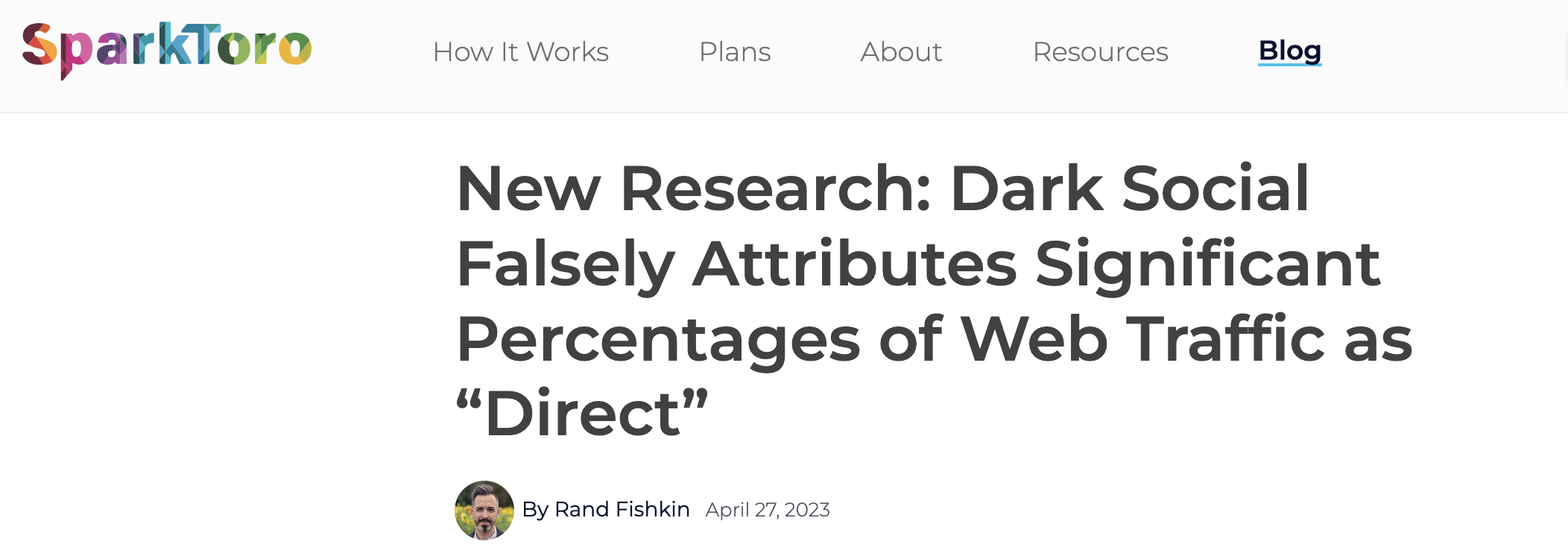Subscribe now and get the latest podcast releases delivered straight to your inbox.
The Most Important Social Media KPIs (Key Performance Indicators)
Your social media metrics should help you determine the performance of your social media campaigns and the ROI from them. The only way to ensure this (or even just get started), however, is by tracking the right social media KPIs -- beyond your fan, follower, or "like" counts. That being said, there are four main areas your social media KPIs should be focusing on.
In 2024, social media is engrained in our lives.
For many, the first thing they do after opening their eyes is to open their Instagram, Facebook, or X app to see what happened overnight.
These users don't just follow their friends. For people ages 18-34, 95% follow at least one brand on social media.
This makes social media a valuable tool for building relationships with your audience. The right social media strategy can expand your reach and increase your marketing ROI.
The only way to know you've got the right strategy, however, is by tracking the right social media KPIs (or key performance indicators).
Your KPIs should focus on generating new engagement, increasing lead generation, and expanding your brand. These are what ultimately impact your bottom line and make any initiative worth it.
You can measure dozens of different metrics on social media, but it's so easy to get sucked into following vanity metrics.
With your ROI in mind, you only need to worry about those that answer the following questions:
- Are you reaching qualified people?
- Are you engaging with qualified people?
- How many of your social media fans are inquiring about your product or service?
- How many of them actually become customers?
There are four main areas your social media KPIs should be focusing on: engagement, reach, leads, and customers.
Focus area #1: Engagement
Engagement is, hands down, the #1 area that you should be concerned with on social media. It is the catalyst for improvement in all of the other social media KPIs we'll discuss.
Simply put, engagement measures the amount of likes, shares, and comments that your social content receives.
Having a large reach with low engagement is a bad sign because it shows that you don't have a message that resonates. Reaching millions of people means nothing if they aren't interested in what you offer.
As long as your audience is engaged, no matter how small that audience is, it will grow organically and generate more leads.
Plus, on platforms like Facebook and X, engagement plays a major role in how many people actually even ever see your update (a.k.a. your reach — see focus area #2 below).
Facebook and X see engagement as a sign of quality and popularity.
The more interactions your content receives, the more the algorithms will share it.
The actual KPIs will vary by social media platform, but typically include the following:
1. Impressions
Impressions is the number of times your content was actually seen. This is at the top of the engagement pyramid because there can be no interaction if your post is not visible.
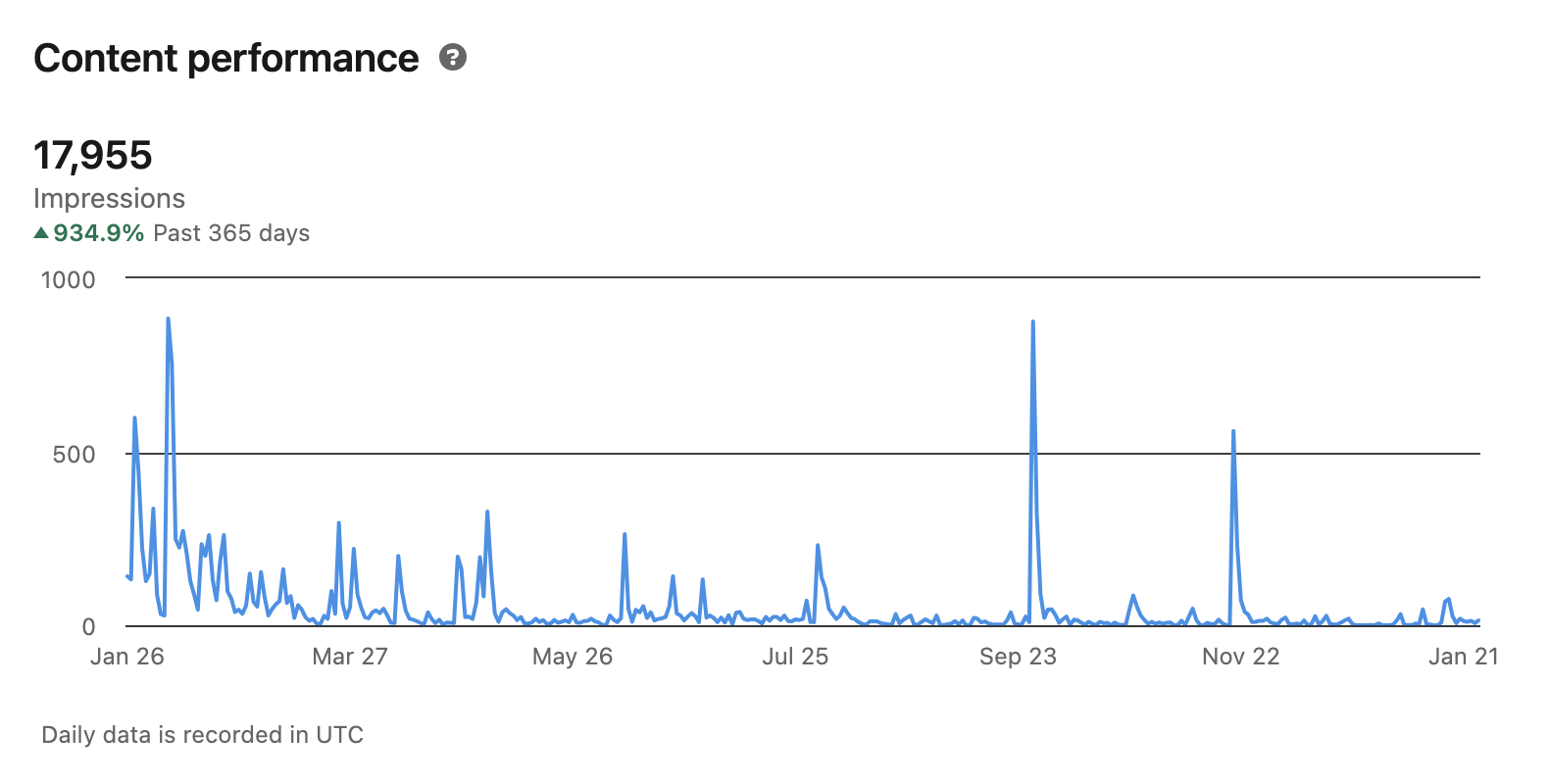 That said, impressions on their own are pretty meaningless. According to LinkedIn: an impression is "the number of times each post is visible for at least 300 milliseconds with at least 50 percent in view on a (signed in) member’s device screen or browser window."
That said, impressions on their own are pretty meaningless. According to LinkedIn: an impression is "the number of times each post is visible for at least 300 milliseconds with at least 50 percent in view on a (signed in) member’s device screen or browser window."
So, a high number of impressions without other signs of interaction only tells you so much.
2. Clicks
Clicks are another powerful sign of engagement. Whether someone is playing a video, clicking a link you shared, or taking a survey you've built, in each case they're clicking on your content. Remember though, that social platforms want to keep users on the platforms themselves, so links that go off-platform won't get the reach that on-platform links get.
Link clicks are reflective of the quality of the title and image included in your post. Of course, your raving fans will click on everything you share, but the majority of people (especially new people) are only going to click on posts that interest them.
- A large number of clicks with very few likes and shares shows that your post got their attention but didn't deliver the exceptional quality needed for the viewer to engage.
- Great overall engagement with a low amount of clicks indicates that you need to work on how you pitch your content by testing different titles or visuals.
3. Likes
"Likes" are social media currency. Because people naturally gravitate towards things that are popular, the more likes your content gets, the wider its reach, which makes likes a crucial metric to track.
4. Shares
As important as likes are, we all know that hitting like on a post can be a passive, mindless action. Likes are good and you definitely want them, but sharing is a conscious decision.
When someone shares your post (or retweets, re-vines, etc.) they are giving a personal recommendation to their friends, colleagues, and family. Because of this, shares are a great indication of the quality of your work.
5. Comments
The point of being on social media is to be — well, social.
Interesting, relevant content sparks a conversation. Even if people leave critical comments, you're better off than having no comments at all. Praise, criticism, and general discussion are all helpful for improving your marketing, but silence is not. Getting comments on your comments is a reliable sign that your content is hitting all the right points of interest.
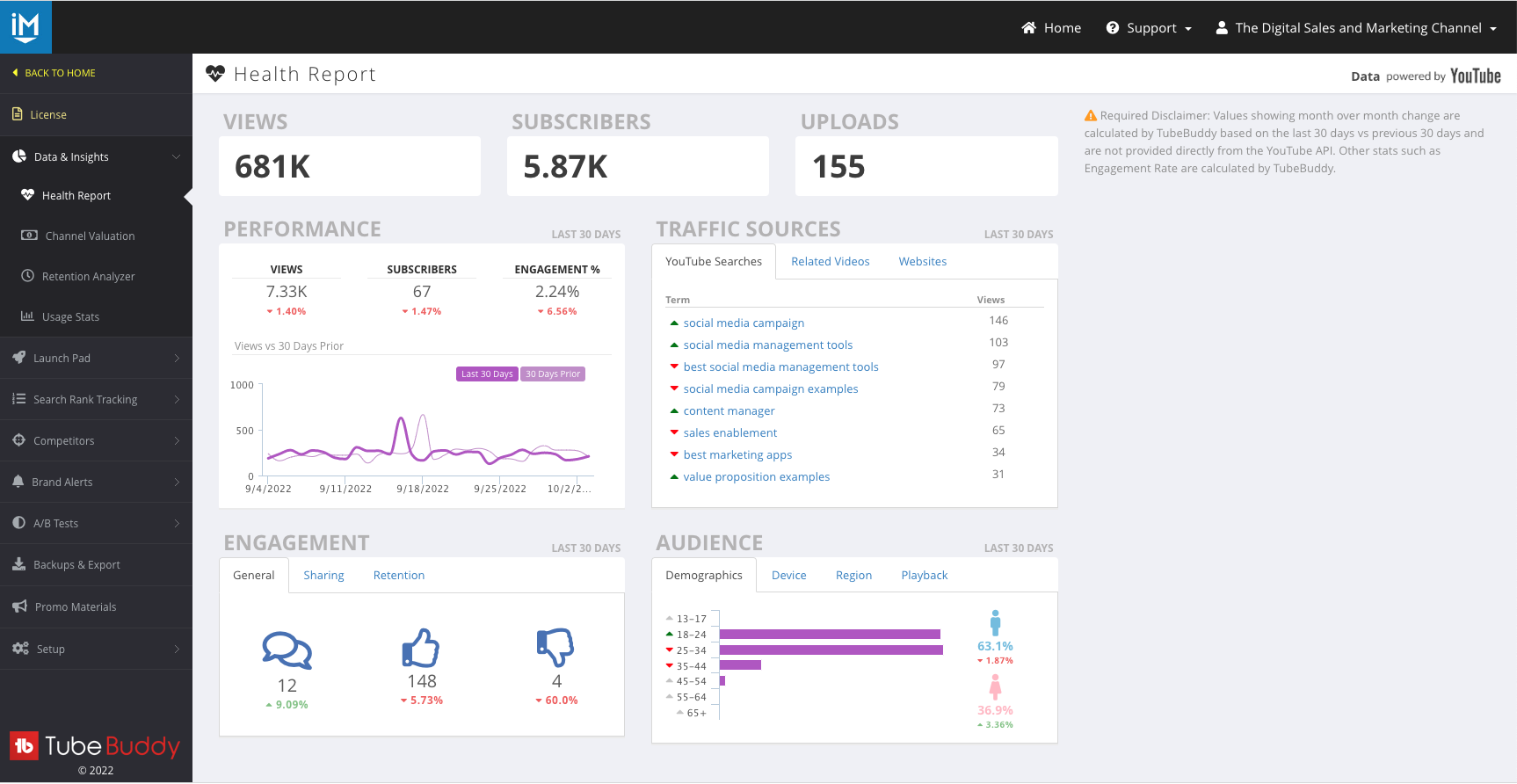
6. Brand mentions
Tags or mentions show that people are having a conversation about your brand even when you're not even in the room. This is another social media KPI that really focuses on your relevance because it shows that you are maintaining top-of-mind awareness.
7. Profile visits
Not all social media platforms will provide this metric, but if it's there, it's worth your attention. Many social media websites are used as search engines for brand research. There will be plenty of people who follow you, but they may never visit your profile.
The people who are just starting to scope out your business, however, will definitely visit your profile. This KPI isn't as important as the others, as you can't really measure intent to buy, but profile visits do indicate interest in your brand beyond your latest post.
8. Active followers
An active follower is considered to be someone who has logged in and interacted with your content within the past 30 days. Unfortunately, for most brands, the majority of people who like or follow your page are unlikely to visit it regularly let alone check out its content.
Doing this on some networks may be a challenge, but thanks to tools like Spout Social can help.
9. Organic social traffic data
This is a huge one. What percentage of the traffic to your website is coming from social media? If you're investing a good amount of time and effort into your social media content, you'll want to make sure that this number reflects that.
You can easily identify this number if you’re using HubSpot. All you have to do is visit the sources section of reports.
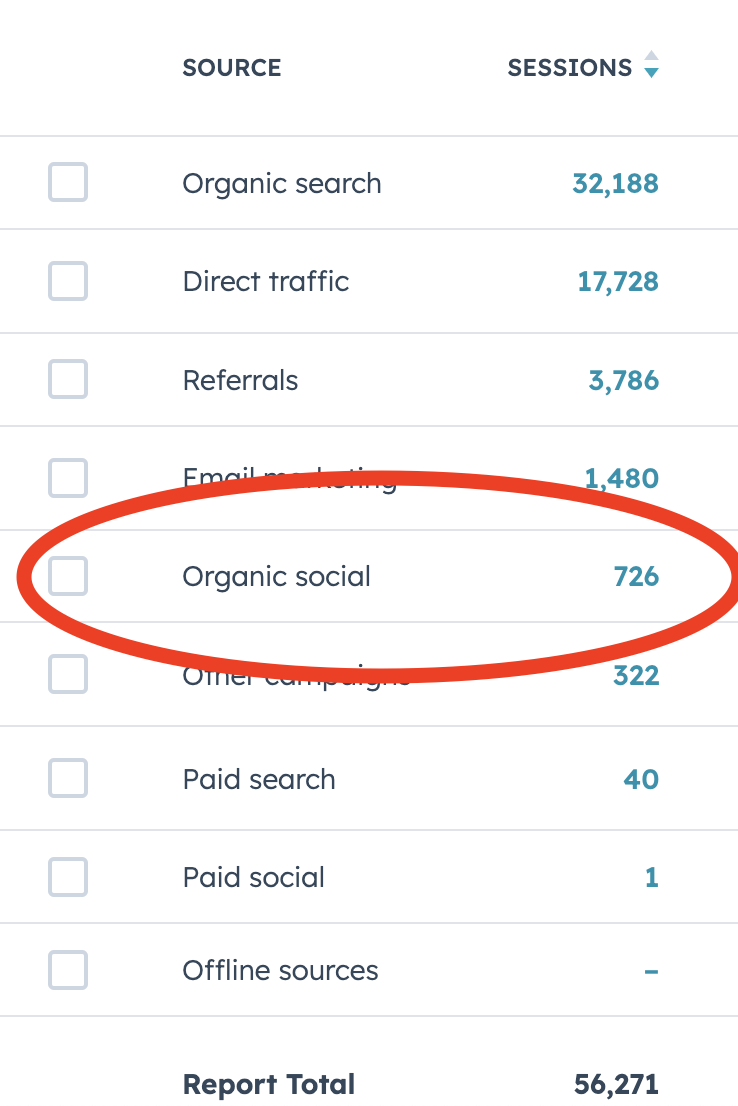
See if a good chunk of your traffic is coming from social media. If not, you might just have to expand the reach of your posts. Consider using a social media publishing tool like SproutSocial or Hootsuite but remember, social networks want to keep you on their site, so links will often open within Instagram, for example, which is traffic that's hard to track.
Focus area #2: Reach
Reach is an old-school marketing metric that still remains important today. It indicates how far your message is actually traveling — how many eyes it's getting in front of.
Measuring reach on social media can be misleading at times, as it only shows how many people potentially saw your post or that it was made available. Unlike engagement, which has definitive answers such as x amount of likes, reach is really just an estimate.
You can measure reach by tracking the following KPIs:
1. Followers or fans
The total number of people following your brand on social media indicate your reach without any engagement. This is the total amount of people that could see your post and have actively said they want to.
2. Impressions
I know that I listed impressions above, too. Let me explain. Impressions is a leading indicator of engagement, but it's also an indicator of reach, so I've put it in twice.
Impressions show how many times your post showed up in someone's newsfeed or timeline, either because they are already following you or because someone they know has liked or shared your content.
This doesn't mean that for every impression someone actually looked at your post or even noticed it — this just means that they had a chance to. Though vague, a higher number is always better. As I said above, they can't click something if it doesn't show up at all.
Focus area #3: Leads
Once your social media accounts start gaining traction, it's easy to get caught up in how many likes and shares you're getting. It feels good to see people enjoying your content, but what about the bottom line?
To ensure you are getting the best ROI from your social media, you have to ask the tough question: How many of these engaged fans are actually interested in making a purchase from my company?
You might have an enormous following on Pinterest because people love your photos, but how does that translate to new sales? Now, say you have a small following on LinkedIn, but it consistently generates new leads. Which one deserves more attention?
Now, for many brands, social media is an awareness play, mostly used for growing a following and building brand authority. Still, we want our marketing to turn into dollars.
Leads from social media are pretty hard to track.
Say someone sees a few of your posts on Facebook. A couple days later she googles your brand and gets to your homepage. She fills out a form and become a lead.
According to your CRM, she came from organic search or direct traffic.
Marketers call this kind of traffic "dark social", and it can make it hard to understand the effects of your social strategy.
A good way to counteract this is to talk to your customers, whether directly or through a form. Ask where they first heard about your brand. Ask if they follow you on social media. And so on.
You can also gain valuable insight by looking into the demographics of the people who are seeing and responding to your content
Focus area #4: Customers
No Inbound strategy would be complete without measuring the number of acquired customers who were influenced by your social media efforts.
Most of your social media posts should be focused on providing valuable content for your audience and building community. But you want to know how many of those fans actually end up making it to the finish line.
This is the ultimate measurement of your success in social media marketing. If you've truly found the right people and kept them engaged, they'll be interested in buying your product or service. Then, they'll remain fans after they become customers. This is the HubSpot flywheel in full effect.
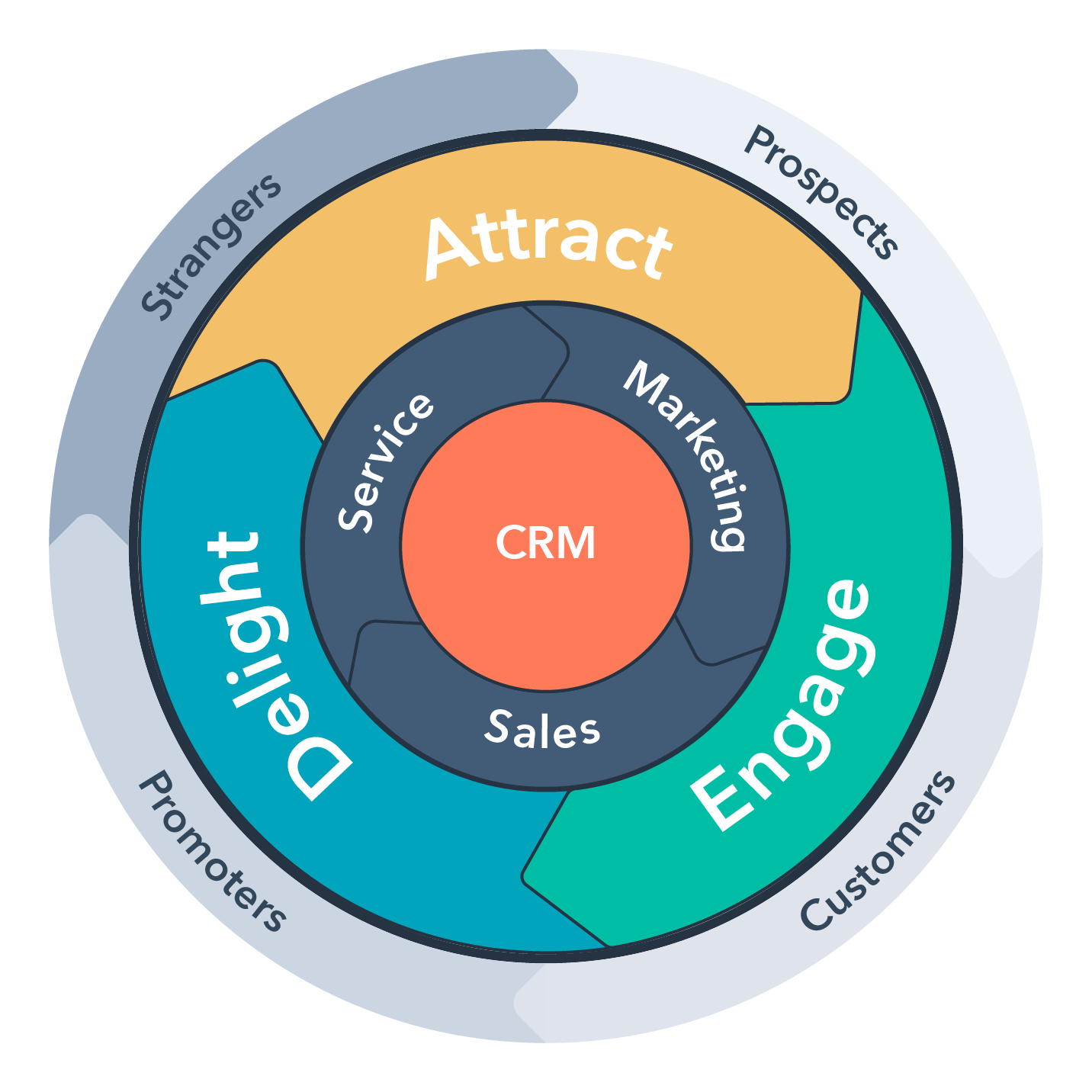
You shouldn't expect to have tons of new customer from social media because that's just the way it goes. A lot of your followers will be current customers, friends, and fans — many of whom won't buy.
However, you want to pay attention to which social media channels produce the highest and lowest numbers. This shows you where to focus more time and it shows you where your best leads are coming from.
Engagement and reach are fun to measure because they make your brand look good, but you have to track the KPIs that paint the full picture. The goal of measuring social media KPIs isn't to justify your marketing strategy, it's to improve it.
Don't forget the 'social' part of social media
Remember, social media are places of online community. To get the most out of a platform, learn that platform's unique culture. Don't go for the hard sell. Instead, engage, offer value, and create connection.
While these metrics are all important, you should only focus on the social media KPIs that are most relevant to the platforms your brand is active on — and that have the most relevance to your audience's behavior when it comes to buying.
Every audience is different. If your ideal buyer isn't inclined to hitting "like," but is still closing, don't beat yourself up about it. Track what makes sense and actually reflects success.
If you are putting together a complete marketing program, check out this broader look at the marketing KPIs that matter.
And if you need help crafting a social strategy that builds the audience you're looking for, schedule a free session with one of our marketing coaches. We help businesses just like yours every day!


Order Your Copy of Marcus Sheridan's New Book — Endless Customers!


